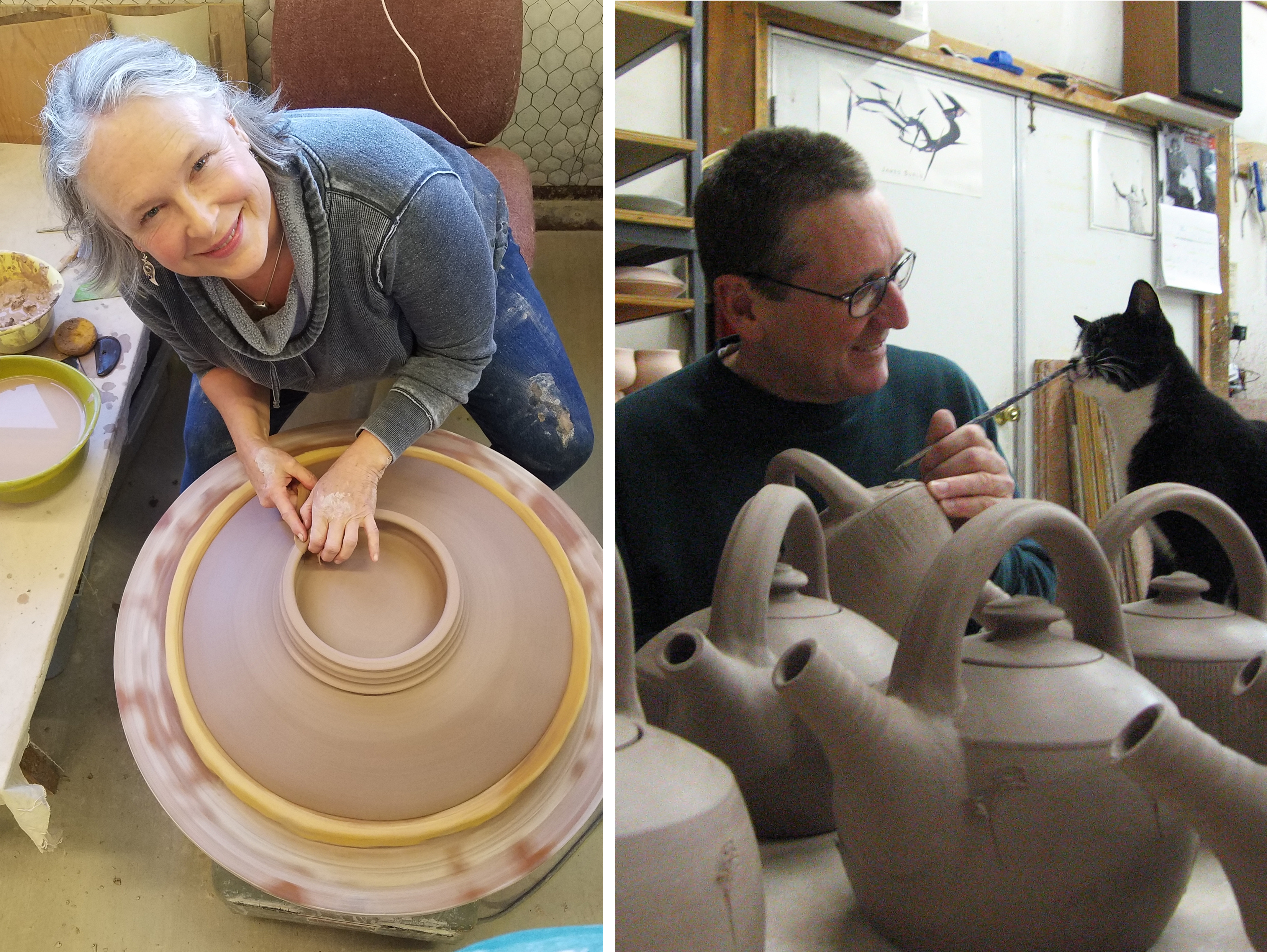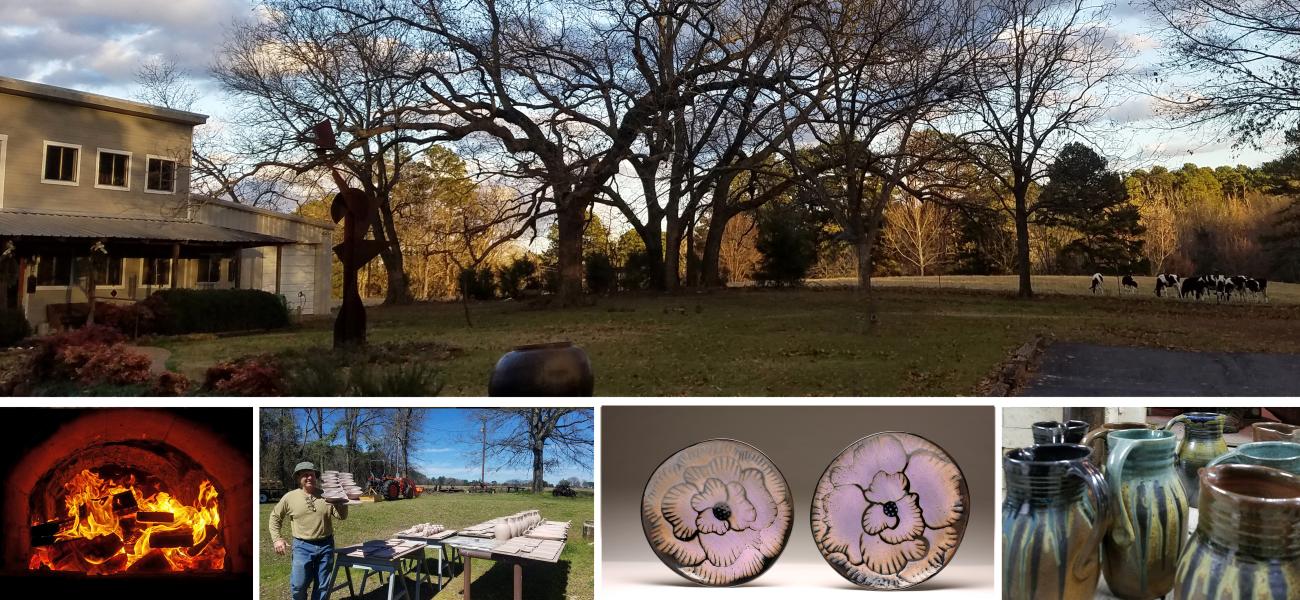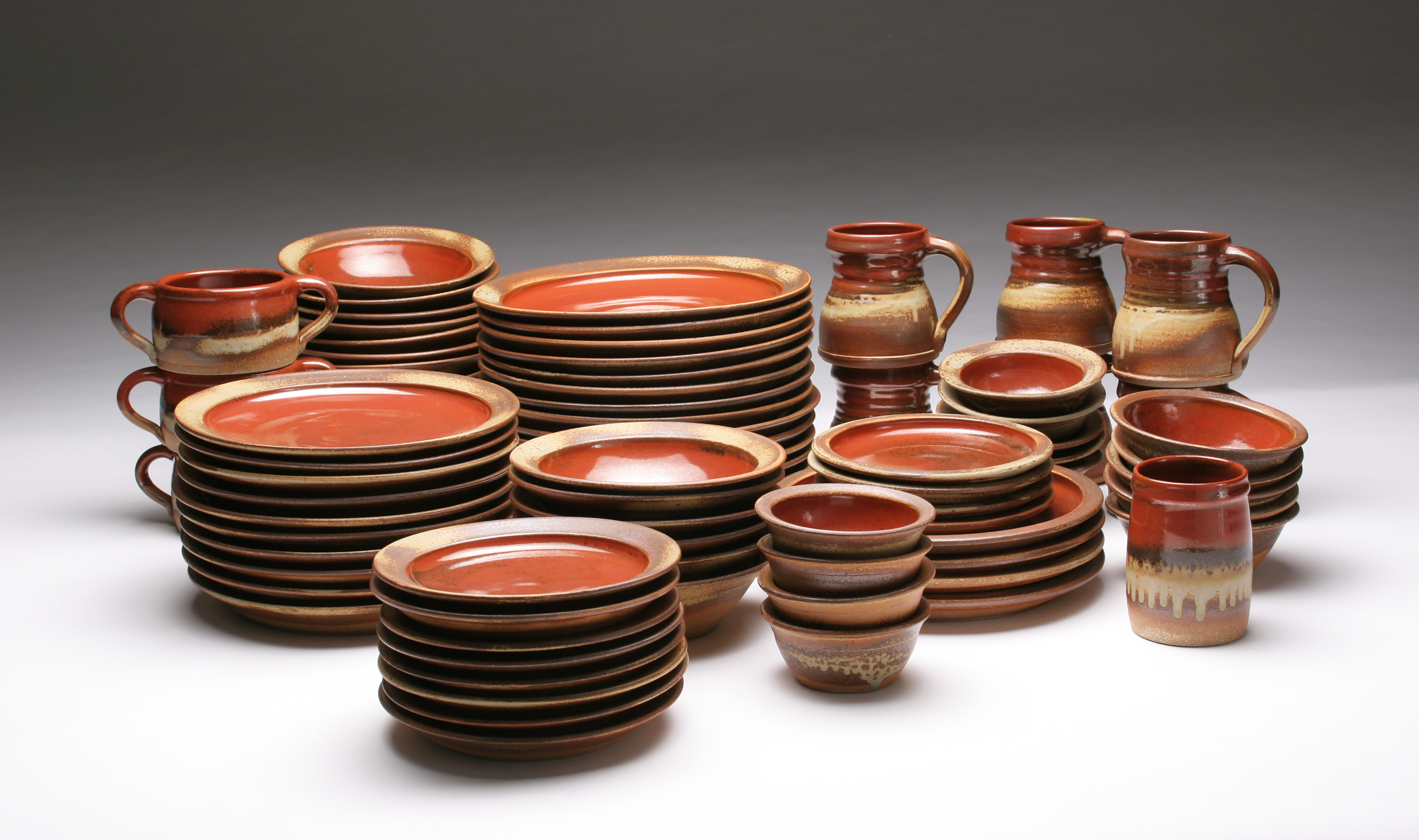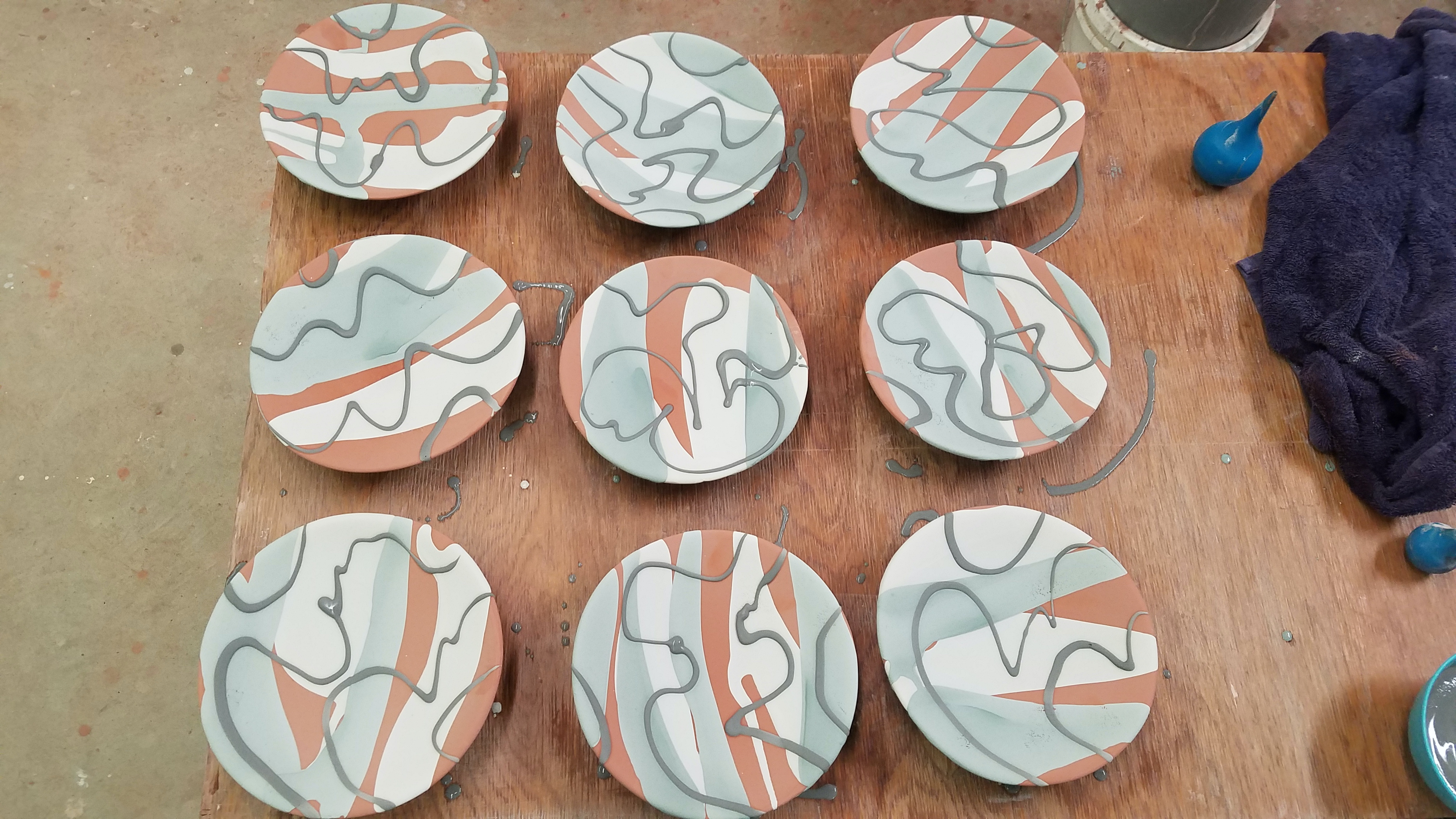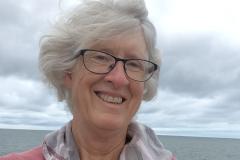Gary and Daphne Hatcher: Formed in Place, Pt. II
(Part II, continued from Studio Potter, October 1, 2021. The following is excerpted and adapted from nine hours of recorded oral history of Gary and Daphne Hatcher’s life together in clay.)
After apprenticing in England Gary and Daphne Hatcher moved on to land near Mineola, Texas, in December 1979. The land became the home of Pine Mills Pottery. Their first kiln with oil drip burners was built in February 1980, their 120-cubic-foot, Bourry box wood kiln was built in 1983, followed by a 45-cubic-foot, downdraft car kiln and an electric kiln. On average, they fire the wood kiln twice a year, and the gas kiln eight to sixteen times a year.
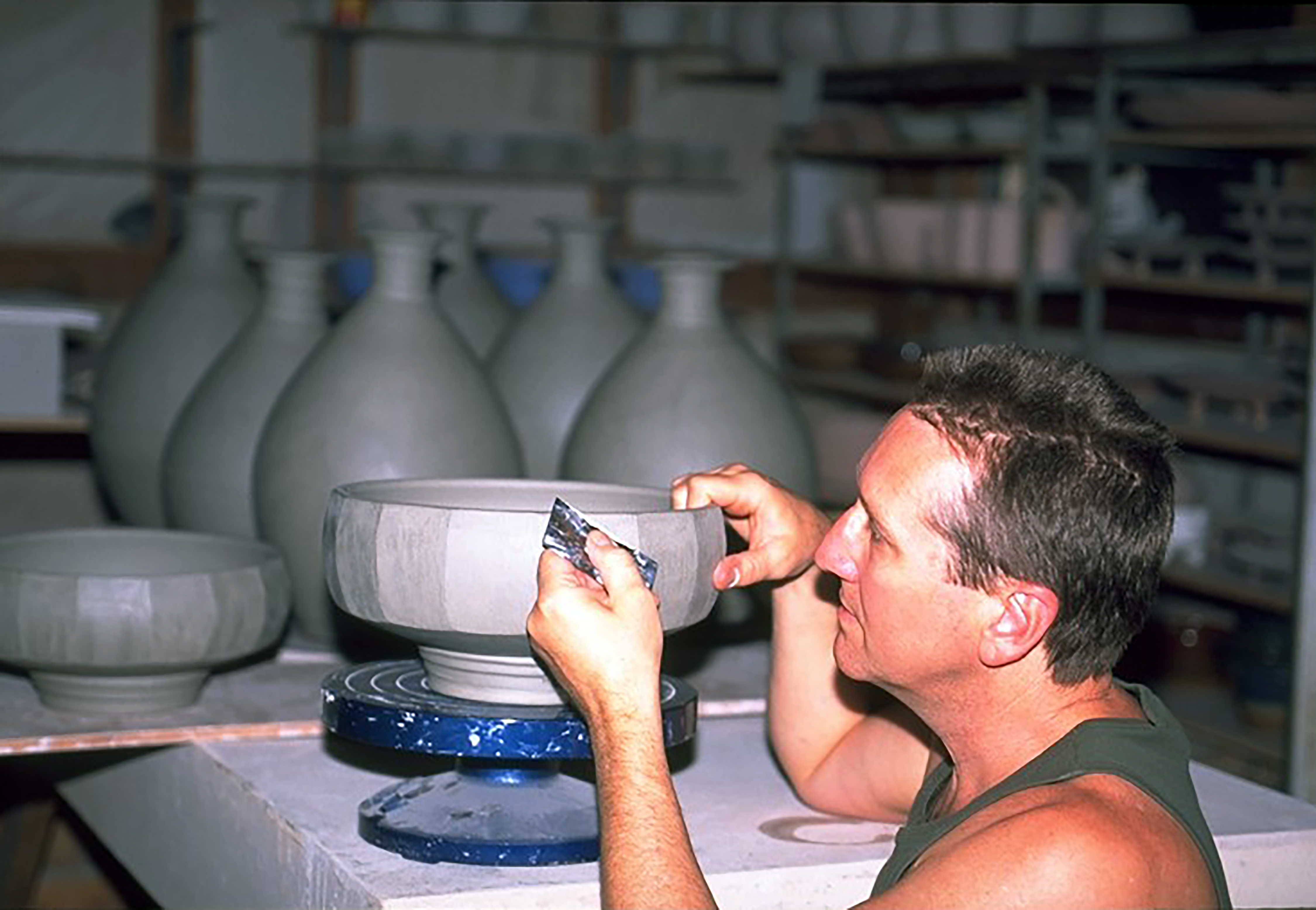
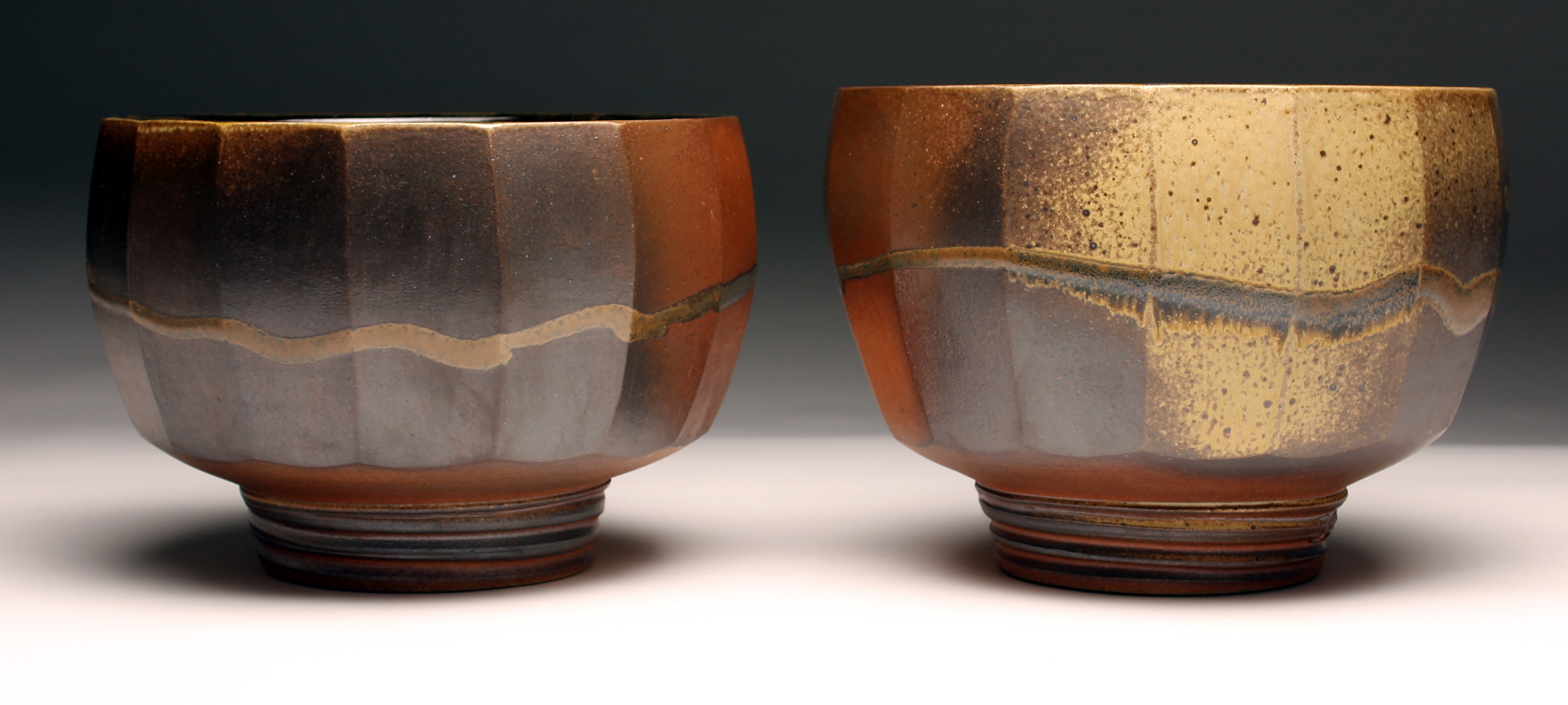
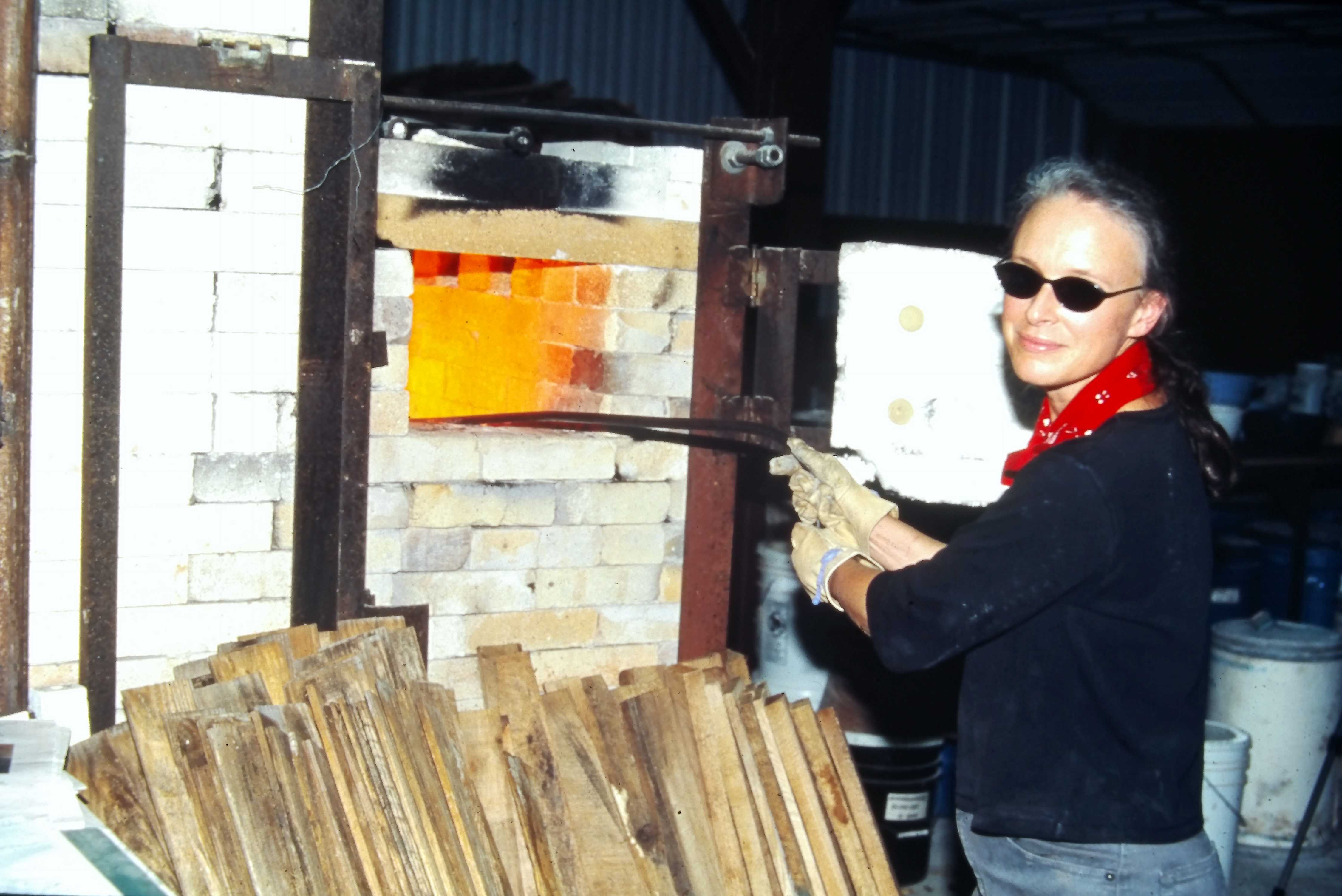
Barbara Frey: What are the overall effects you're seeking in a wood-kiln firing?
Gary Hatcher: The interaction between the glaze and the wood ash. We do beautifully fired pots in the gas kiln, but the surfaces are homogenous. In the wood kiln, the glazes have more dimension. Because one side is different than the other, you can look at it and see the path, the direction of the flame. It’s more of a creative expression to fire the wood kiln. The most interesting thing I've created in recent years is the grooved bowls. I do slip-trailing around the outside of the bowls and, putting them in the wood kiln, I get a lot of variety. There are panoramas all around the outside of the bowl.
Daphne Hatcher: We like the effect of ash on glaze as opposed to just the accumulation of ash on the bare surface of a pot. Whenever you fire any piece in a wood-fired kiln, you are turning it over to the kiln and allowing the wood ash to fall where it may. There are so many variables that you think are uncontrollable and unpredictable, but the more you fire a particular kiln you learn the nuances of it. I like the idea, and it is an idea, of allowing nature, or in this case physics, to have some input into my work rather than it all being decided by me. A lot of my glazes are intentionally and carefully applied. That intrinsic nature of mine to be specific and orderly and planned, I like being nudged a little bit by the kiln, made a little bit more flexible.
In 1980, the Hatcher’s original plan was to sell their work through wholesale accounts and craft fairs. When it became apparent that this approach wasn’t generating sufficient dependable income and didn’t suit their temperament, they created a showroom and focused on direct sales. This model, emphasizing personal contact, relationship building, and word-of-mouth advertising, has been effective over the majority of their career. The educational function of contact with people who get to see not just the pots, but what it takes to make them, is critical to this success. Having recently added an online sales gallery to their website, their revenue streams have expanded beyond their region and helped to keep them afloat during the pandemic.
Early on, publicity in various regional and state-wide media outlets was successful in bringing customers to the pottery. A mailing list of 3,000 customers is still used for postcard mailings, along with email blasts, and Facebook/Instagram postings. Annual studio events in May and November bring many repeat and new customers to Pine Mills. Over the years they have also regularly participated in the Texas Clay Festival in Gruene and, more recently, as core members of Louise Rosenfield’s annual Dallas Pottery Invitational.
BF: What defined success at the beginning? Was it breaking even?
GH: Buy enough gasoline to get the car to town and not having our power cut off!
DH: In the beginning, it was just making ends meet on a shoestring. There was the real necessity to put food on the table and make our house payment which was $110. We could always manage that. I would say success to me, probably to Gary too, was opening the kiln and having the firing yield what you were hoping for.
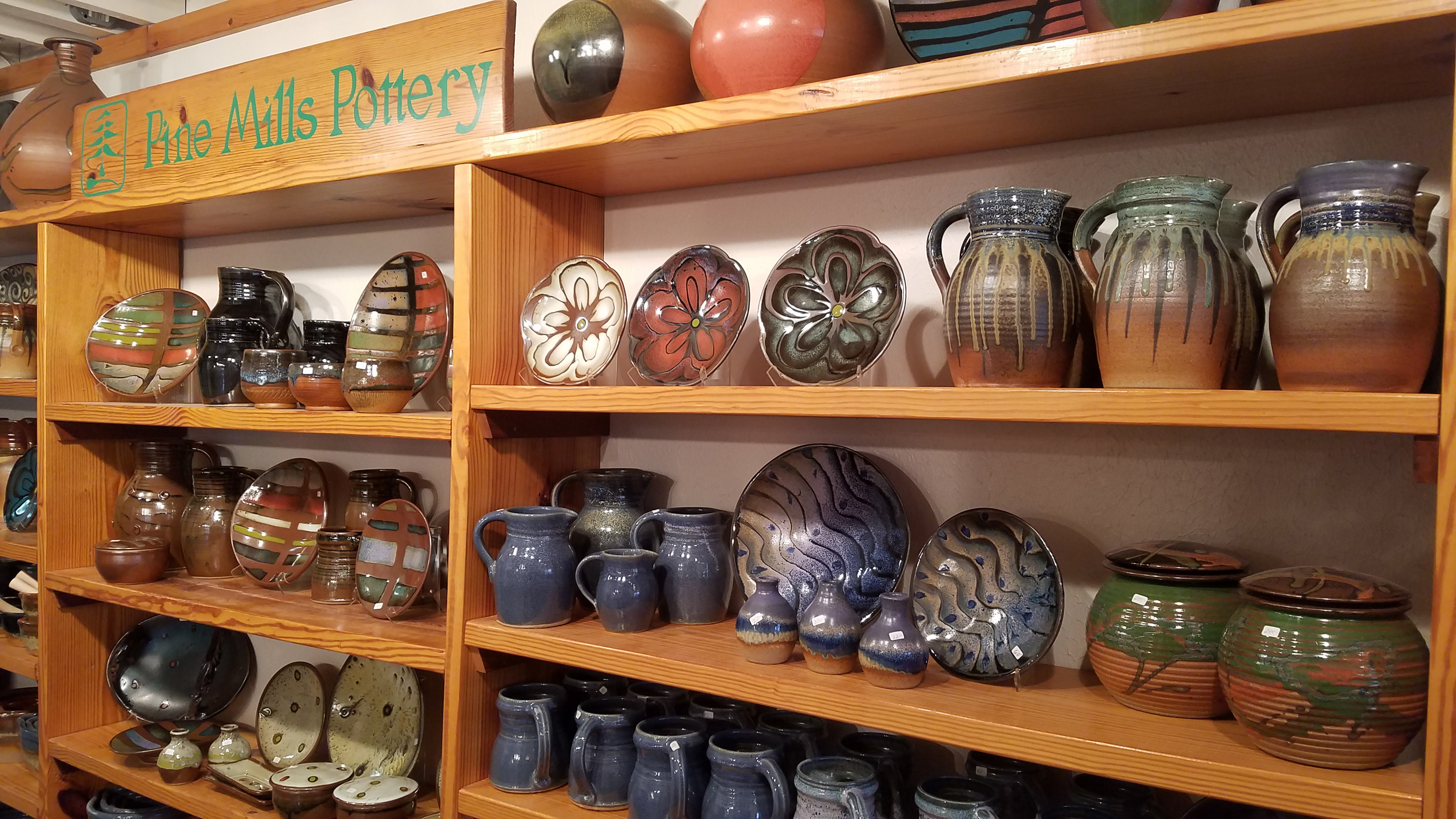
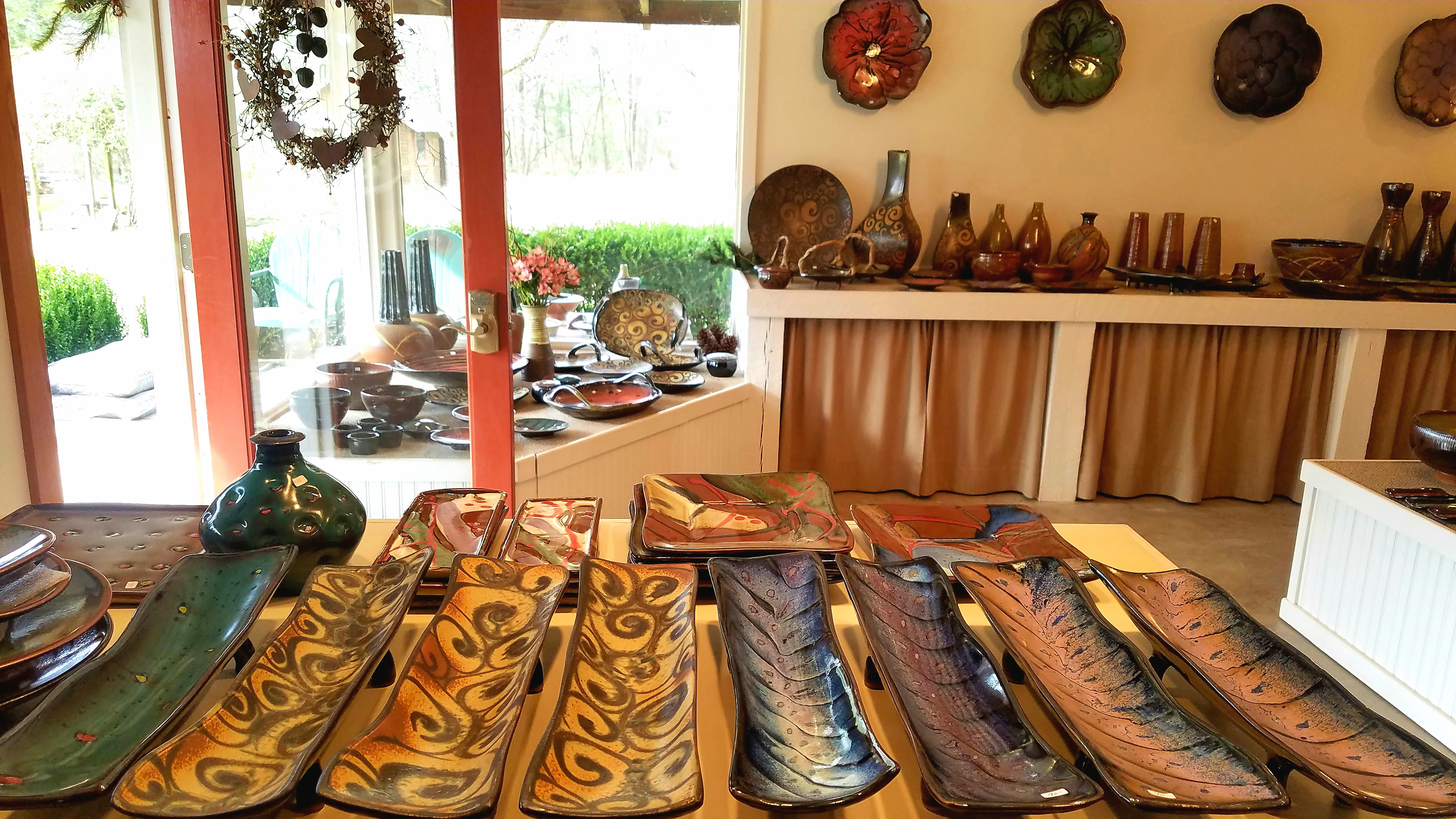
BF: When you were making the decision of where to establish your pottery, were you assuming that you would be able to sell your work in that immediate area of East Texas?
DH: We didn't imagine having a gallery. In those first years, we would go to craft fairs, but [the revenue] was never what we thought we would make at a craft fair. We were always disappointed in that being a way to market things.
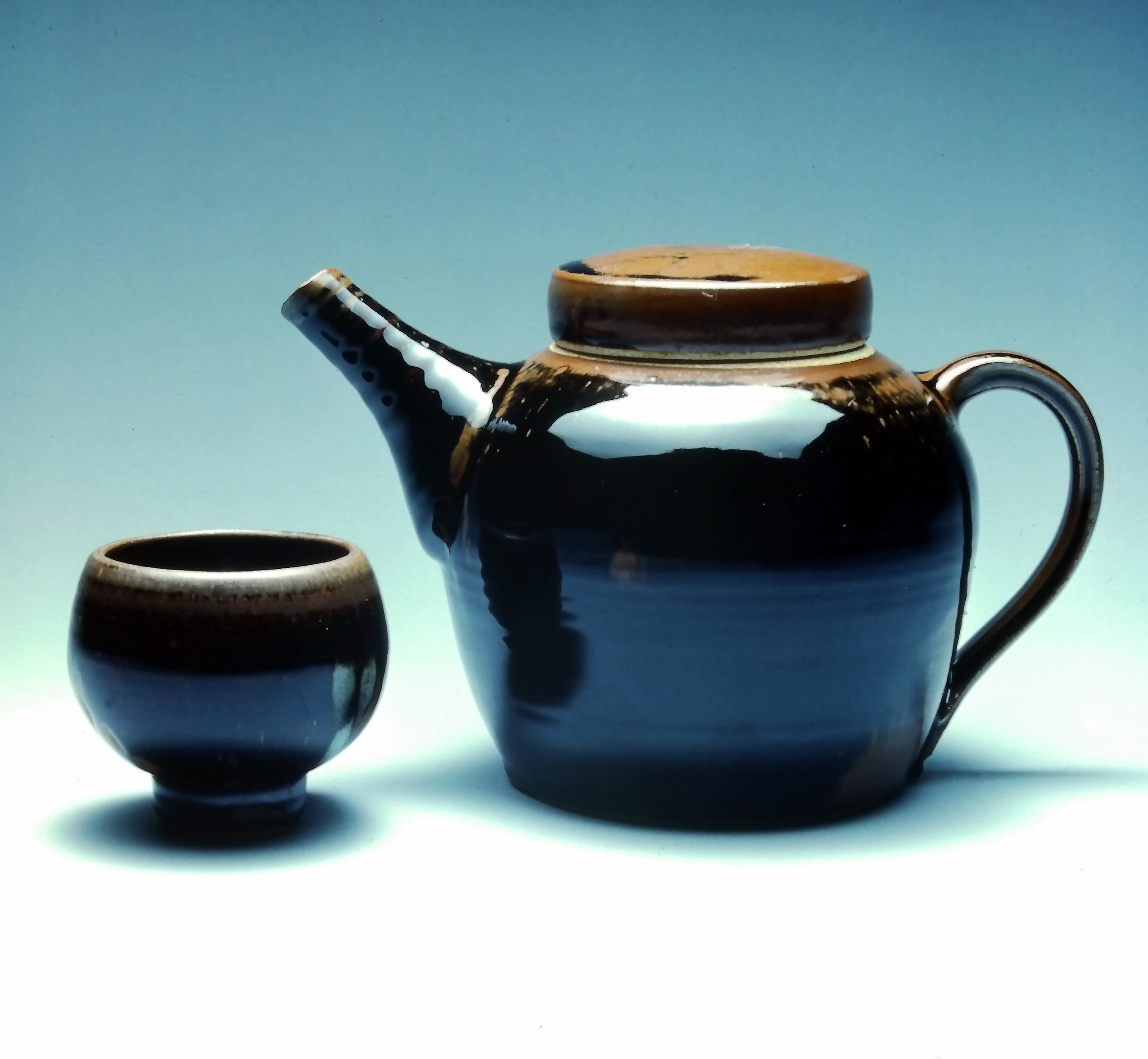 GH: We'd go to fairs, and we have all this brown, well-made, English-type pottery – everything was brown. People don't much buy that stuff. Other potters buy it, but there was nothing in the vocabulary of most people to make them appreciate that kind of work. It was hard to sell brown things. Next to us would be somebody putting ducks on their pieces with yellow and blue. They'd sell the hell out of it, and we'd be glad to make $100.
GH: We'd go to fairs, and we have all this brown, well-made, English-type pottery – everything was brown. People don't much buy that stuff. Other potters buy it, but there was nothing in the vocabulary of most people to make them appreciate that kind of work. It was hard to sell brown things. Next to us would be somebody putting ducks on their pieces with yellow and blue. They'd sell the hell out of it, and we'd be glad to make $100.
DH: The pots come out of the kiln and they're beautiful or not, and you love them or not. But then they go into the marketplace. We learned early on that Texans didn't like celadons, and they really didn't like tenmokus. People liked colors. We developed a glaze palette that resonated with us, that didn't compromise our aesthetics, but that also sold.
GH: Karen Karnes used to say you've got to educate your buyer. If you bring them to the studio, they see you making it, you give them some information into the meaning of it. They may think that $100 was a lot to pay for a pitcher. But once they see you throw one and what goes into it, then they'll be glad to have it.
DH: Over time, word got around our community that we were potters and people began stopping in, asking to see what we made, and so we developed one area of our workplace as a little gallery. And since then, we've expanded to doing pretty much all retail from our premises.
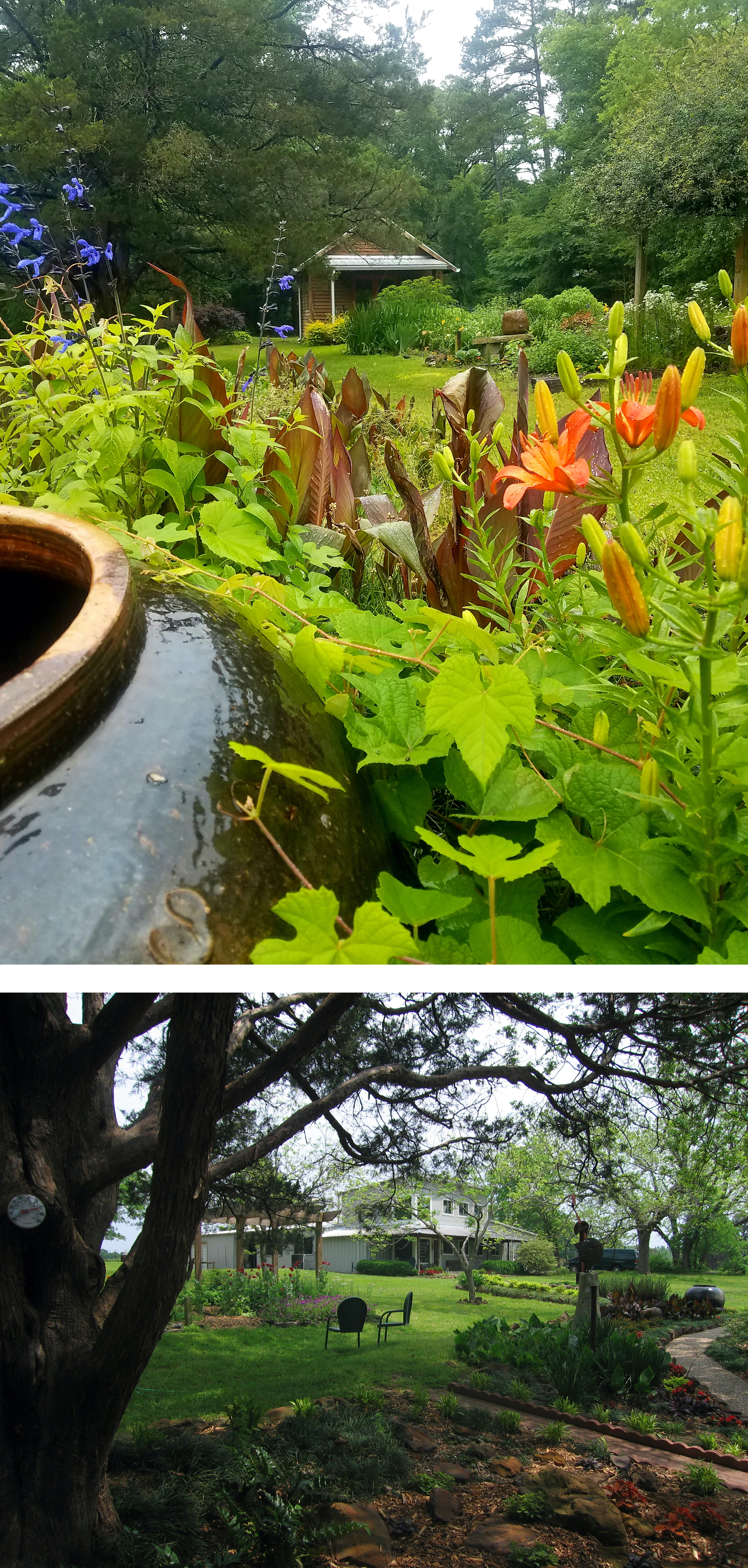 BF: When people come to your studio, you’re offering them an expanded experience. That’s what people take away – as much as they take away an actual purchase. In a way, it’s a form of marketing.
BF: When people come to your studio, you’re offering them an expanded experience. That’s what people take away – as much as they take away an actual purchase. In a way, it’s a form of marketing.
GH: The experience of coming here is all wrapped up in the piece they buy. They take the experience with them.
DH: We have a serene place here, and we make it available to people. People come from a busy, hectic life where they have to go through rush-hour traffic to and from work, and they come out here and it's peaceful. East Texas is kind of a best-kept secret. People don't realize how beautiful it is out here. Much of the year I have beautiful gardens with a cacophony of flowers blooming. [Customers] walk back to our pond. It's an experience. It's not the same as popping into a gallery in Dallas.
GH: I think people buy pottery, people collect art, for a sense of belonging, for a sense of community. People buy work because it makes them feel good. And sometimes, it may be inexplicable why it makes them feel good, but I think it's a deep grounding in humanity – some kind of connection to humanity, art history and our past.
BF: How do you approach pricing? How do you confer value on what you create? Do you think that your work sells for what it's worth?
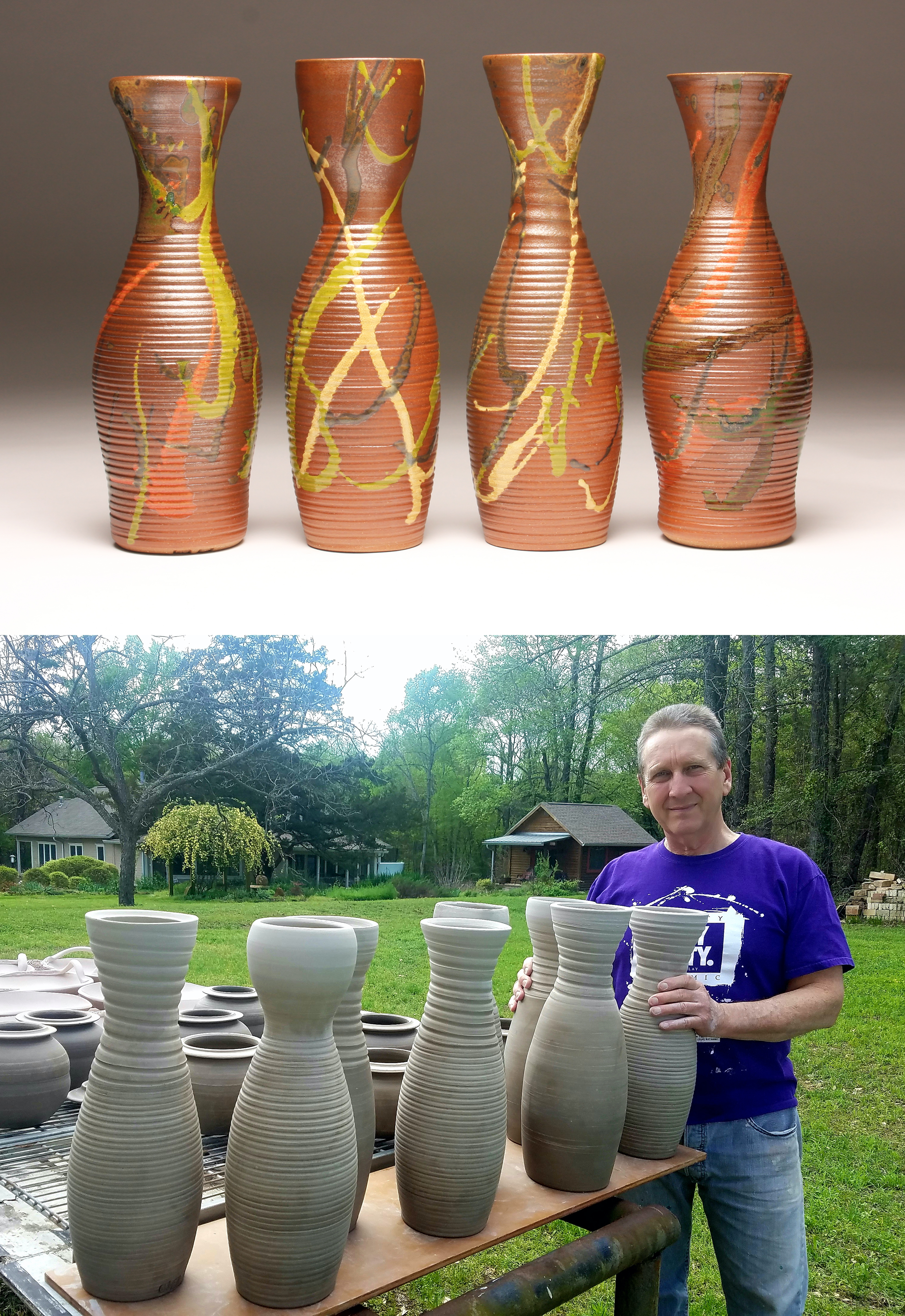
GH: I'll tell you what Michael Cardew told me, he said something should be priced according to what the market will bear. I've got some nice bowls and I price them up because people want them. I ask $325 for a teapot now. I don't get it often, but that's what I feel I need to get for a teapot. There are other things that sell like crazy, I try to price them up.
DH: When we started out in our twenties, we didn't have a clue what it really cost to live. But at the end
of the day, you have to have enough to pay your mortgage, groceries, utilities, and taxes. So, you kind of extrapolate backwards from that. For many years, I took an inventory of every single firing. We got a sense of how many dollars’ worth we got from each firing. If you need $50,000 of inventory in a year, in order to take away $30,000 after your overhead, well you sure better fire that kiln ten times. We were trying to figure out how to make a living and not work ourselves to the bone or work unreasonable hours.
GH: A lot of people come in and say I love your work, but I just can't afford it. I get it. Then Daphne will come in and say someone just spent $1200. It's quite a compliment that people will do that. People who have the money, you offer them something that's high quality, they'll buy it. I don't have any illusion about making pottery for the masses. I don't think my work is Mingei or feel a need to make sure that everybody's got a handmade coffee cup. Was it you who was saying we make pots for lawyers? It’s true.
 BF: That quote was from an interview I did with Val Cushing. I asked him who his buying clientele was and he smiled and said “Doctors and lawyers and dentists, oh my!” Like from the Wizard of Oz: lions and tigers and bears, oh my!
BF: That quote was from an interview I did with Val Cushing. I asked him who his buying clientele was and he smiled and said “Doctors and lawyers and dentists, oh my!” Like from the Wizard of Oz: lions and tigers and bears, oh my!
DH: We actually have many customers from all walks of life. And we've always tried to have some things in the showroom that, 40 years ago, were under $10. Now, under $20. Lots of things under $50. That doesn't prevent me from making anything that I want to make at any price. We have things of all price ranges. I am approaching seventy now, and I hear that clock ticking away. At this point in my life with clay, I am dropping away the things that are not so essential to a fulfilling experience for myself and focusing more on individual works that satisfy my curiosity and exploration.
Civil War Era kiln discovered on their land
DH: In 1985, about one-hundred-twenty acres came on the market, adjacent to our home and studio. We knew if we didn't buy it, we would probably never have the opportunity again. It was “for sale by owner” and we took out a ten-year agreement with them, and those were a hard ten years, financially, paying for that property. I never regretted it, or concerned myself with the hardship, but just worked a little harder to pay for it.
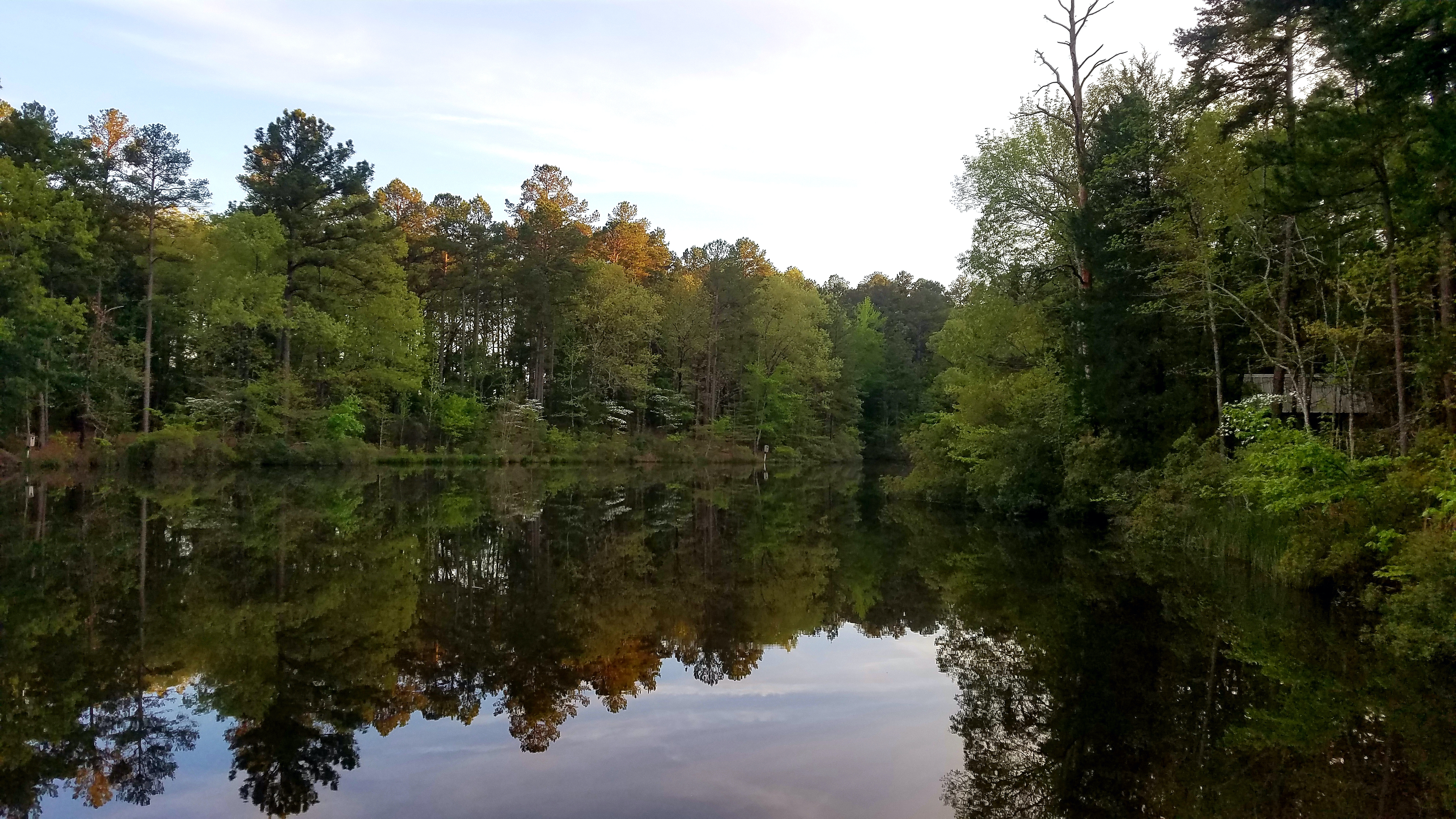 GH: We decided to build a lake, and we hired a man with a bulldozer to dig it and build a huge dam. He came up to the house one afternoon and said, “You need to come look at this.” We went to look at it and there was a huge waster pile of shards.
GH: We decided to build a lake, and we hired a man with a bulldozer to dig it and build a huge dam. He came up to the house one afternoon and said, “You need to come look at this.” We went to look at it and there was a huge waster pile of shards.
DH: He thought he had hit the foundation of an old house. And we had seen a brick or two in the woods now and then, but we didn't connect it to a kiln.
GH: The kiln was a groundhog kiln. Dr. Georgeanna Greer, who's written books on Texas pottery, dated it from either during the Civil War or right at the end of the Civil War.
DH: We know where the clay was dug. We can still dig clay there. They made handmade wire cut bricks, built the kiln out of unfired bricks, and then began making rudimentary jugs, crocks and butter churns, things that people needed to live their lives. We always thought the jugs were for moonshine, but they weren't, they were for sorghum syrup, which was made around here, a source of sweetness when refined sugar was not available.
GH: So, we weren't the first potters here. It was fun to find a pottery on the property that we bought. What's the chance of that happening?
BF: Was your purchase of the larger tract of land motivated by having a wood kiln? Was it intended to be a woodlot?
GH: That's a good question. You know, initially we did.
DH: It has a lot of creeks and ravines, which was why we were able to build a nice lake here. The land that could be farmed was a peach orchard and it was in total decline. We thought that it would be good to grow our own pine trees for our kiln. If I were to do it over again today, I would have planted mixed hardwoods rather than pine, but in 1985 that was the going thing. We had the derelict peach orchard totally cleared and we planted 20,000 pine seedlings.
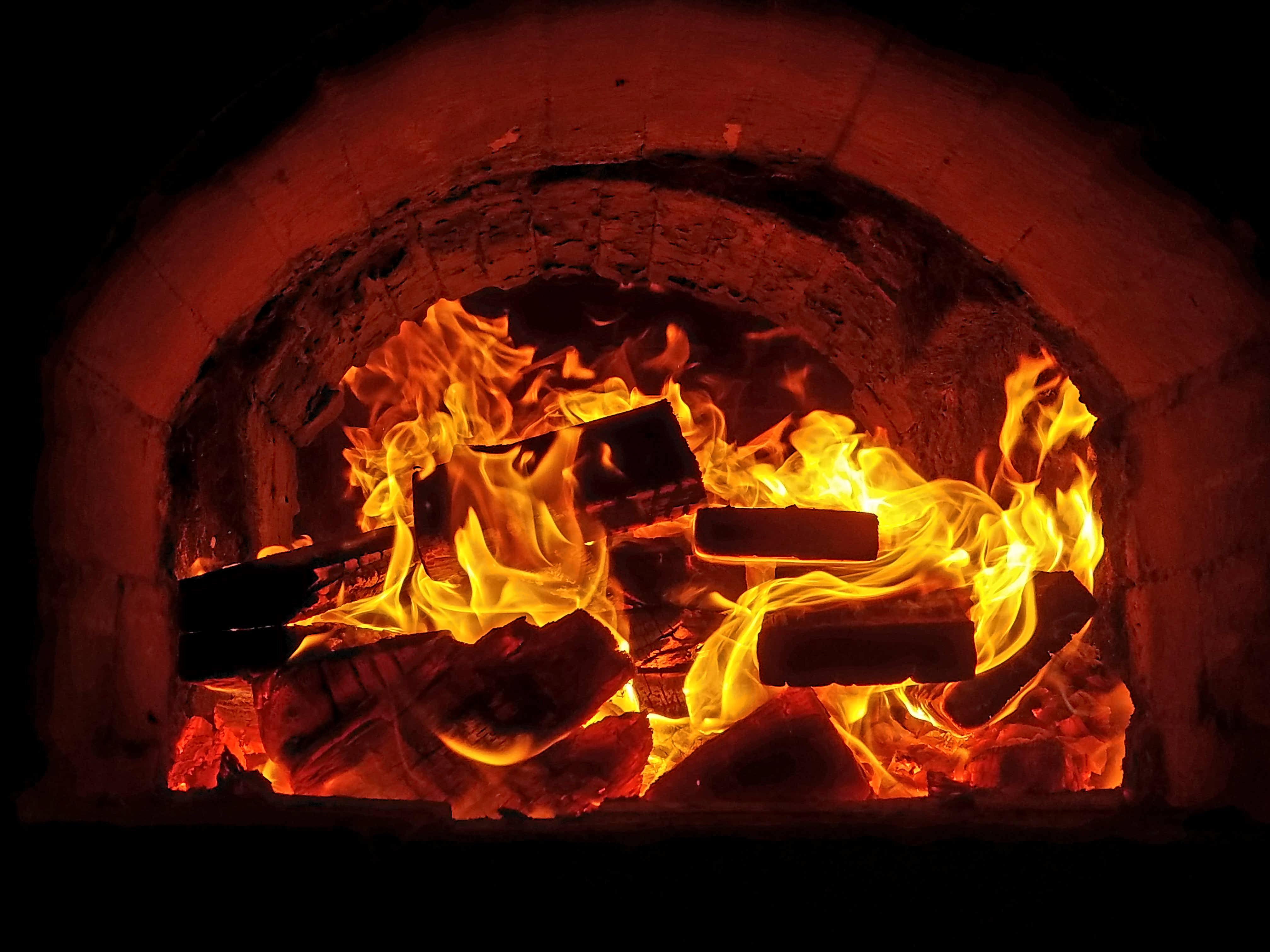 GH: For several years I would go back there and, with help, cut and split it up into lengths of wood to fire the kiln.
GH: For several years I would go back there and, with help, cut and split it up into lengths of wood to fire the kiln.
DH: The wood that we use to fire the kiln today comes from a hardwood pallet factory, and it's already cut to length, it's kiln dried. We get their culls that are twisted or have knots or splits. It’s so easy to fire with. But for fifteen years, Gary and a helper would cut the trees, bring it here, cut it to length, split it – it was an ordeal.
BF: As you watch the younger generation set out on the path of making a living as a potter, are there challenges, advantages, or disadvantages that are different from your journey?
DH: I would say the biggest stumbling block in setting up a studio is the cost of buying a piece of property. We bought this place in 1979 on a shoestring. With a lot of sweat equity and a lot of time we've made this work for us. The options to get a foothold are fewer and that's where cooperative and community situations come into play, renting a co-op space with other artists. I don't think that it would be easy to do what we did, today.
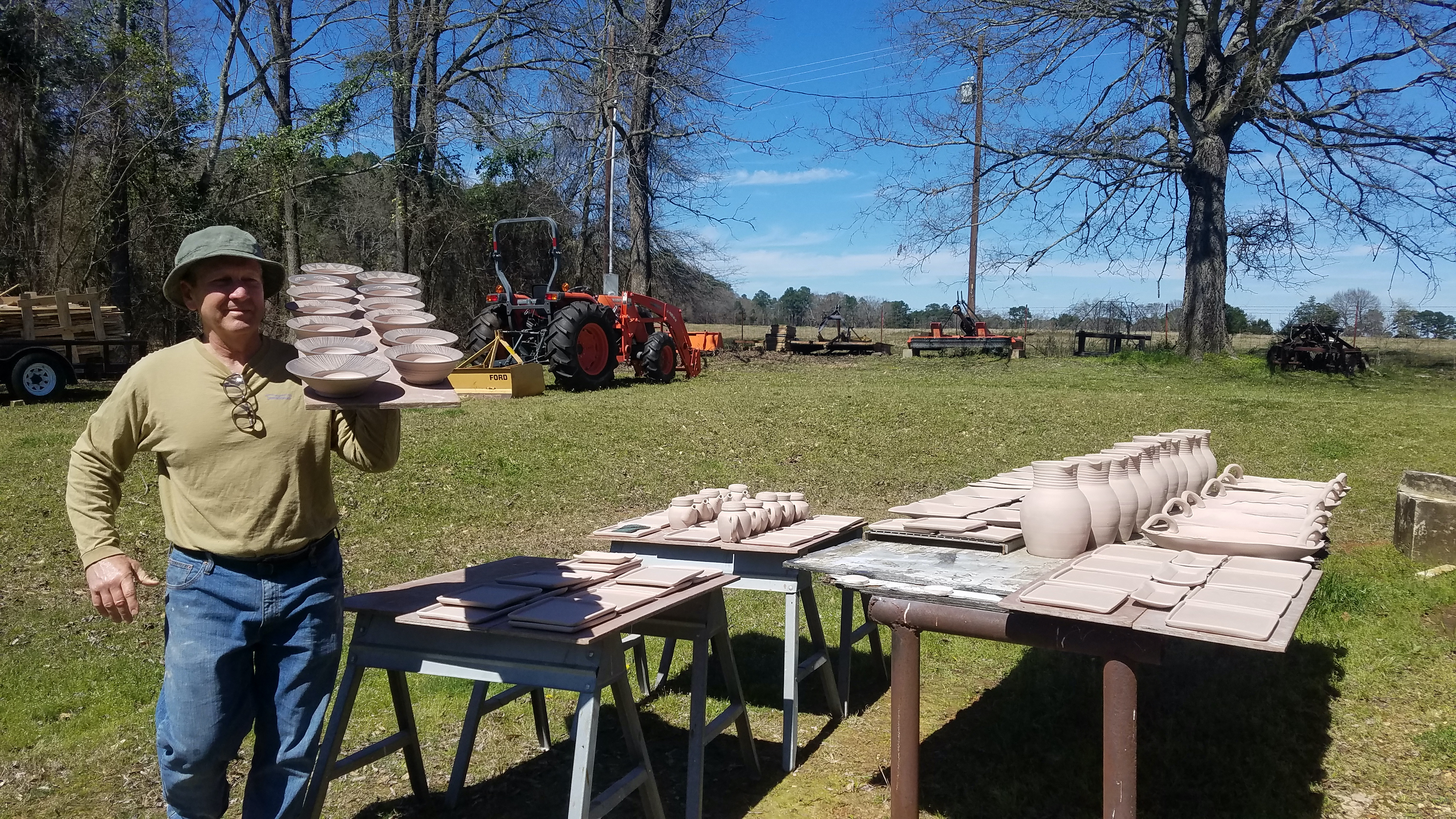 GH: Daphne and I were idealistic enough to think that we could live out in the country and make pottery and survive. Looking back on what we did, it seems unfathomable. We took a huge risk. We were out here in the country with a newborn baby, five thousand dollars in the bank, in an old beat-up house with no plumbing in it, and no electricity early on. If I was blessed with anything, it's optimism and determination. I don't think I can anticipate what obstacles there will be for young potters coming along. Neither can I imagine the ingenuity and the solutions to problems that will be coming along, as well.
GH: Daphne and I were idealistic enough to think that we could live out in the country and make pottery and survive. Looking back on what we did, it seems unfathomable. We took a huge risk. We were out here in the country with a newborn baby, five thousand dollars in the bank, in an old beat-up house with no plumbing in it, and no electricity early on. If I was blessed with anything, it's optimism and determination. I don't think I can anticipate what obstacles there will be for young potters coming along. Neither can I imagine the ingenuity and the solutions to problems that will be coming along, as well.
DH: We have different obstacles today than we had when we were twenty. Approaching seventy, our obstacles are how do you maintain the studio that you created and how do you keep your body from falling apart? Gary and I have both actively tried to take care of our bodies every decade. In our twenties, every single day we got up and the first thing we did was walk several miles. In our thirties we got interested in martial arts and found it to be fantastic exercise, both physically and mentally.
GH: We were both black belts. So we did strenuous martial arts for the decade of our thirties. In our forties, we went to the gym. When we turned fifty we bought bicycles, determined to be in the best shape we could possibly be in as we entered our sixties – and we’re still falling apart!
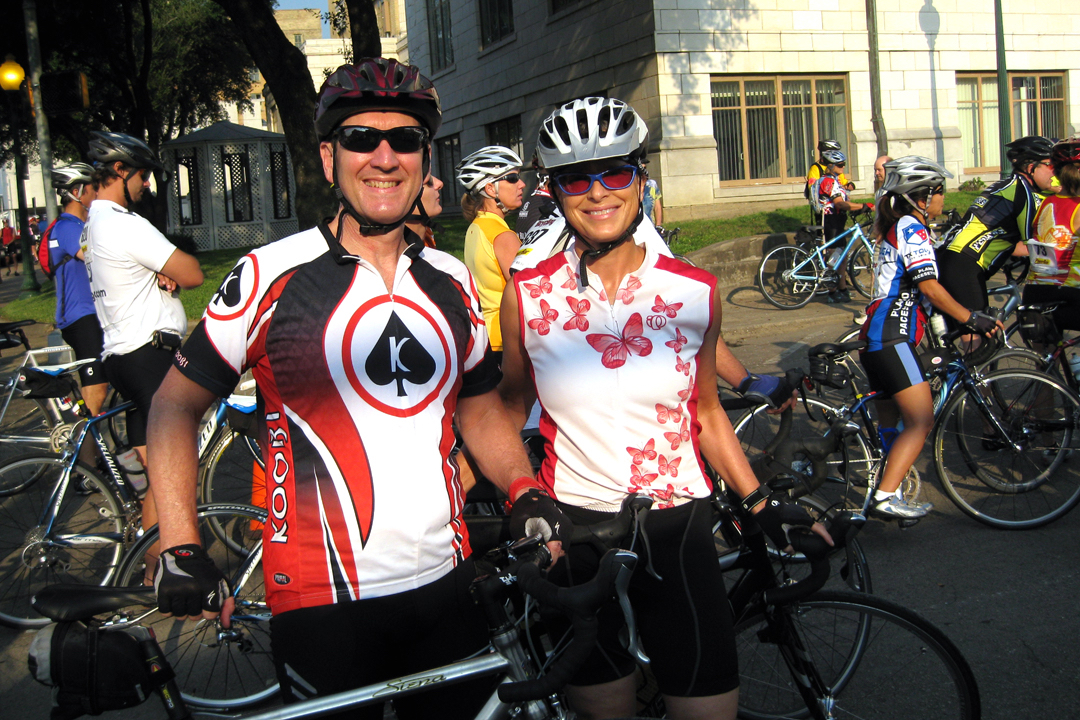
BF: Knowing how important it was to sustain your physical health, what adaptations did you have to make in terms of how you worked in the studio?
DH: I had a catastrophic bicycle accident in 2009. I broke my pelvis in three places and shattered my left hand and had to have it reconstructed. When I recovered from that I had to change the way I worked. I couldn't work hours and hours straight because my bad hand would get tired; it would curl up. You can't make a pot with a curled-up hand. I learned to change my routine. I could still make everything I ever made, I just had to break it down into smaller clumps of time, pacing myself more. I can't stress enough to people starting out to take care of your back. We've done lots of heavy lifting and stupid things with our bodies, even being fit and active people. I'm a much smaller framed and smaller person than Gary, but we both have messed our backs up, and there's no fix, there's no turning around from that, you just have to baby it and take care of it.
BF: In addition to physical well-being, what about creative well-being?
DH: A lot of artists talk about burnout. Very few times in my career have I felt psychologically burned out. Gary and I both have interests outside of the studio, and interests separate from one another. It's important to me to always feed my soul, whether it's with gardening, or Qigong, hiking, or heading to the Rio Grande Valley and going birding with my cousin, or enjoying my book clubs. I think it's important to have a variety of interests, a variety of friends from all walks of life, constantly being
fed information that then percolates down through your consciousness into whatever it is you're being creative with.
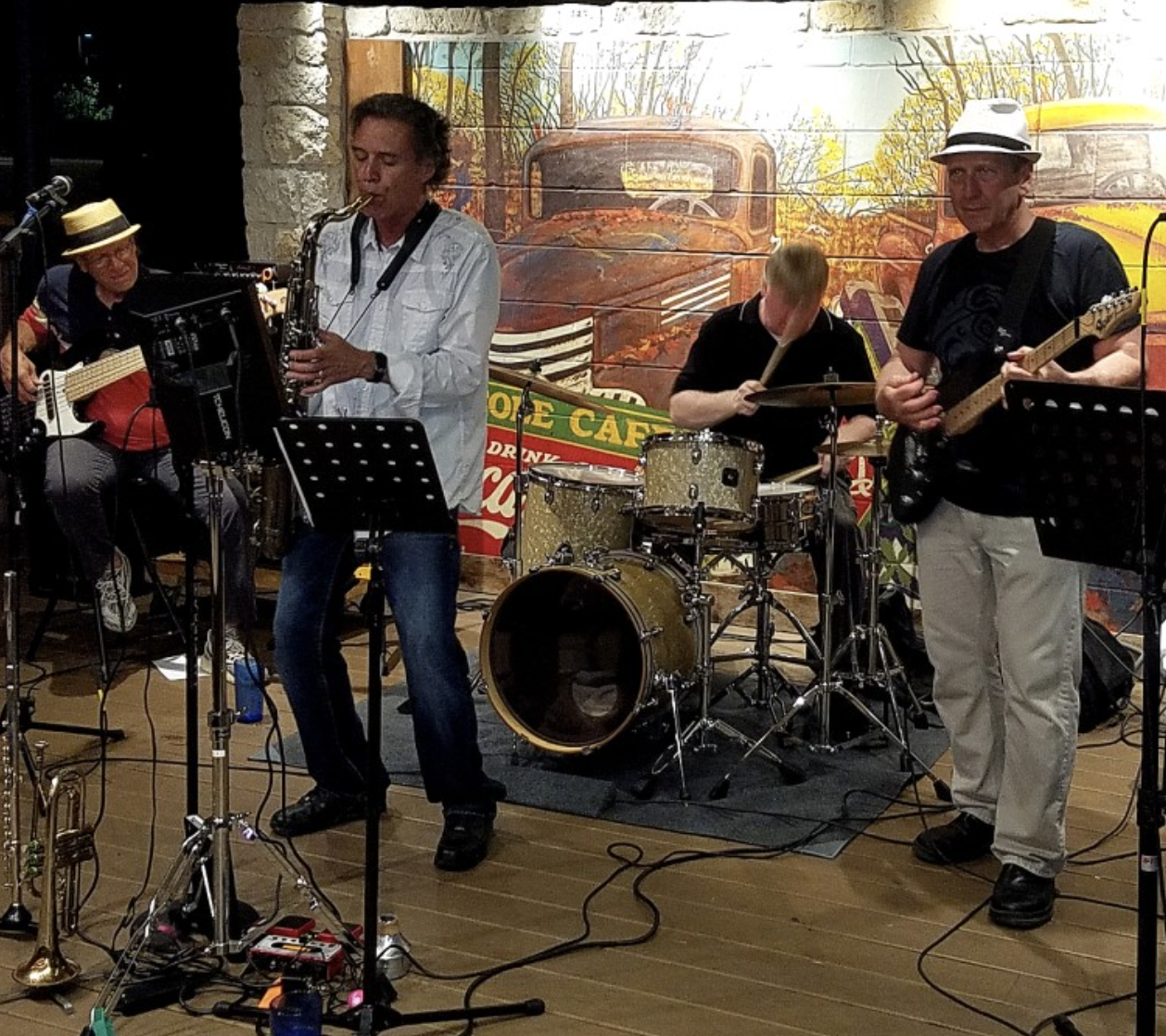 GH: What we're talking about now is psychological health. I remember when I was in my forties, I'd been potting for twenty years, I had to address this whole idea of burnout. I didn't get burned out, but I was close to being burned out. I used to be much more dogged about staying in the pottery. I would not go anywhere; I would just stay here and work. Daphne helped me get beyond that. I've cultivated other interests because it's not just about being a healthy potter or a healthy artist – it's about being a healthy person. So, I developed other interests: music, bike-riding, choosing people that weren't ceramic artists as friends.
GH: What we're talking about now is psychological health. I remember when I was in my forties, I'd been potting for twenty years, I had to address this whole idea of burnout. I didn't get burned out, but I was close to being burned out. I used to be much more dogged about staying in the pottery. I would not go anywhere; I would just stay here and work. Daphne helped me get beyond that. I've cultivated other interests because it's not just about being a healthy potter or a healthy artist – it's about being a healthy person. So, I developed other interests: music, bike-riding, choosing people that weren't ceramic artists as friends.
BF: Has there been a time during your career when you didn't make something that you wanted to make because of economic constraints?
GH: Sure, there've been times, not that I didn't make it, but that I made it and realized that it was just going to sit there. But it's interesting, every single thing we make – eventually somebody's going to buy it. If I make something that's worth $350, I'll leave it at that price for five years if I have to. I'm not going to sell something just to get rid of it.
DH: I wish I could say that I made the more time-consuming work first, instead of saving it for last. Those more complicated pots require a different mindset, a different space in which to create. It's not the same mindset as turning out thirty or fifty platters that I've made a hundred times before. Finding those special spaces and times that give you the kind of zen you need to make the more contemplative work – life gets in the way, it's not so much economics. When you have a studio and a selling space in the same location, you’re interrupted, sometimes several times a day. I try not to resent time pulled away from my thoughts because that's counterproductive. I try to enjoy every moment of my life. And if the moment I'm experiencing right now is waiting on a customer in the showroom, I try to connect with that person.
GH: There are certain things I make, where a confluence or convergence of different aspects has to be right. It's actually about meditation and peace. More than economic concerns, I'd say there are psychological concerns or physical concerns that prevent me from making something I want to make.
DH: I agree. It's a psychological space you need to get into. Your question addressed the economics of it, but that's never been why I make or don't make that special work. It's not about whether it's going to sell or not, or that I need to make these other things first, so they will sell, so I can pay my bills. Honestly, economics, it's a force that you have to reckon with, but it's never been our primary focus.
Gary’s Teaching
In 1985 Gary reluctantly agreed to teach a semester as an adjunct at the University of Texas at Tyler. He was offered a full-time position and he declined. He was approached again in 1992 and taught another semester. He was again offered a full-time position, and this time Daphne urged Gary to think about it.
BF: What motivated your decision to join the Department of Art and Art History at the University of Texas at Tyler and teach ceramics?
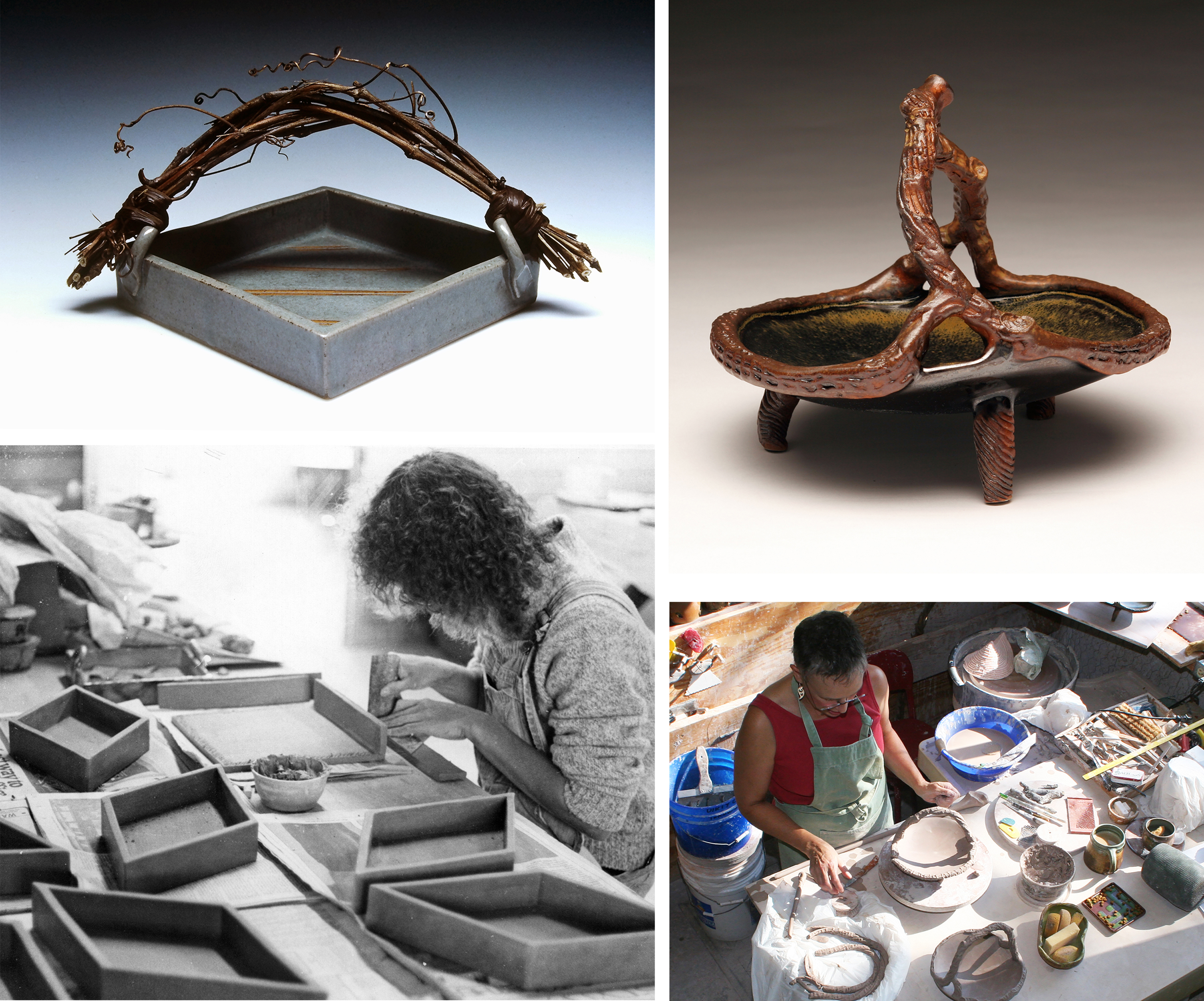 GH: What I realized was that I enjoyed being out of the studio a couple days a week. The university gave me a venue where I could pass on what I knew. I liked that a lot. Also, there was a real issue in our relationship with the public. People would come to the pottery and they'd ask if Gary was here. Daphne would say, “Well, no, he's not here.” They'd say, “OK, when you talk to him, tell him I want to talk about pottery.” We realized we had a problem because Daphne was every bit as involved as I was, but they looked to me as “the potter.” We started to try to figure out how to address that. It was imperative that she create her own work, that we not collaborate on things, that she had her own identity. I saw being away as healthy for our relationship. It was healthy for me just to be out of the studio.
GH: What I realized was that I enjoyed being out of the studio a couple days a week. The university gave me a venue where I could pass on what I knew. I liked that a lot. Also, there was a real issue in our relationship with the public. People would come to the pottery and they'd ask if Gary was here. Daphne would say, “Well, no, he's not here.” They'd say, “OK, when you talk to him, tell him I want to talk about pottery.” We realized we had a problem because Daphne was every bit as involved as I was, but they looked to me as “the potter.” We started to try to figure out how to address that. It was imperative that she create her own work, that we not collaborate on things, that she had her own identity. I saw being away as healthy for our relationship. It was healthy for me just to be out of the studio.
It seemed that now there were positive reasons for Gary to consider teaching full-time and integrate it into their lives. Gary returned to school and got an MFA degree from Texas A&M University-Commerce, focusing on stone sculpture.
GH: I completed my MFA after three years. So now we're in 1995, they immediately created a tenure track position for me as an assistant professor. But then, the other thing they asked me to do was to be chair of the department. I reluctantly agreed to do that, which I did for fifteen years. That's a whole book in itself.
DH: One day Gary was having a rough day. He said, “What would you think if I quit teaching, and I was just here all the time, like it used to be?” Without thinking, my immediate response was, “Well, it'd be alright with me, but you have to find somewhere to go two days a week.” We had a good laugh about it. We got married while we were in college. The first twenty years of our marriage, we had the unusual and unique situation of being together twenty-four-seven, kind of like a farming family. Fortunately, we're compatible. But when he was away at the university, I had this psychic, emotional space that I had never had before – and Gary's not a repressive person. I had a tremendous amount of freedom, but you don't realize how many compromises you make in your choices to accommodate somebody else.
GH: I think it was instrumental in your own identity and development.
DH: I learned more about who I was, and my relationship with clay, rather than our relationship with clay. Like any business starting up, it was quite a struggle for a long time. When he started teaching, in addition to me having psychic emotional space to expand my own identity, we had a little regular money coming in, and it wasn't such a push to be sure that we sold, sold, sold, just to pay our bills. That was a positive thing and, of course, he also had health insurance with his teaching job. There were a lot of constraints that were lifted when he started teaching.
GH: I would not be honest if I said that the economic factor didn't play a part. Anybody that's self-employed knows the difficulty of getting health insurance. We moved out here and set the studio up against all reasonable advice from our peers and our parents. But I have no doubt that we would have continued and survived, because we'd been through the worst part.
DH: We've never not been able to make ends meet. The first fifteen years that Gary did not teach, we did fine. But I would have to say health insurance is, sadly, a pretty big deal in America.
GH: Our lifestyle has always been important. If I wasn't able to integrate teaching into my lifestyle, I wouldn't do it.
The functioning of the functional
BF: You have devoted your lives to making pots for daily use for over forty years. What is your thinking about making functional pottery at this point?
DH: I didn't come into making pottery in the traditional way, I came in through the back door as a weaver. I was interested in Magdalena Abakanowicz' large, sculptural woven pieces. I was more interested in forms and expression. But I also am a practical person and I love the beauty of utilitarian ware. I loved the concept that you could make something with your hands, fire it in a kiln, and it would serve you for decades. The permanence and the durability of something like that was meaningful to me.
GH: When we went to England I was all wrapped up in the idea of functionality. Bernard Leach talked a lot about function, but his pots weren't particularly functional. If you've ever picked up a Bernard Leach pot you better be sure you didn't drop it on your foot. My thinking about utility came into maturity after I became a university professor and taught a lot. The function of art is to communicate something, to celebrate the human experience, to enlighten someone into something they don't know about, to create depth in the human experience. If I make a teapot it's going to be functional and
easy to use, the best that I can make. But my assessment of other people's work is much broader than that. Another teapot can serve to heighten someone's awareness, someone's spirit, it can serve to be humorous. Utility and the ritual and celebration of eating is just one thing. It's not the only thing.
DH: One thing about function and utility is you don't tend to notice when something functions perfectly because it's doing its job. But if you have a pot that doesn't function well, you notice it immediately. So true utility and function is a subtle thing. People come in who own dinner sets of ours and they comment how much they enjoy using it. Ours has a nice heft to it, a nice balance. The use of it is seamless. And it's also beautiful. Twenty years ago, we started having orders for dinner sets from people who had grown up in a home where their parents had our dinner ware. In recent years, we've had their children, the third generation coming in and they want Pine Mills Pottery too. That's certainly gratifying – that something we've been making for over forty years is still something people seek and want.

BF: What do you think is most distinctive about your work? What defines a "Daphne pot?" or a “Gary pot.” And I thought it might be interesting if Gary defines Daphne's work and vice versa.
DH: Gary is a strong, stable, predictable, solid individual. And his pots are like that. They're not frivolous, and Gary is not a frivolous person. If he does something to a pot it's intentional and it has a purpose. He makes things that are substantial. They have a definitive base and a full belly, and a strong shoulder; they are much like who he is. Even his glazing is intentional and defined and straightforward.
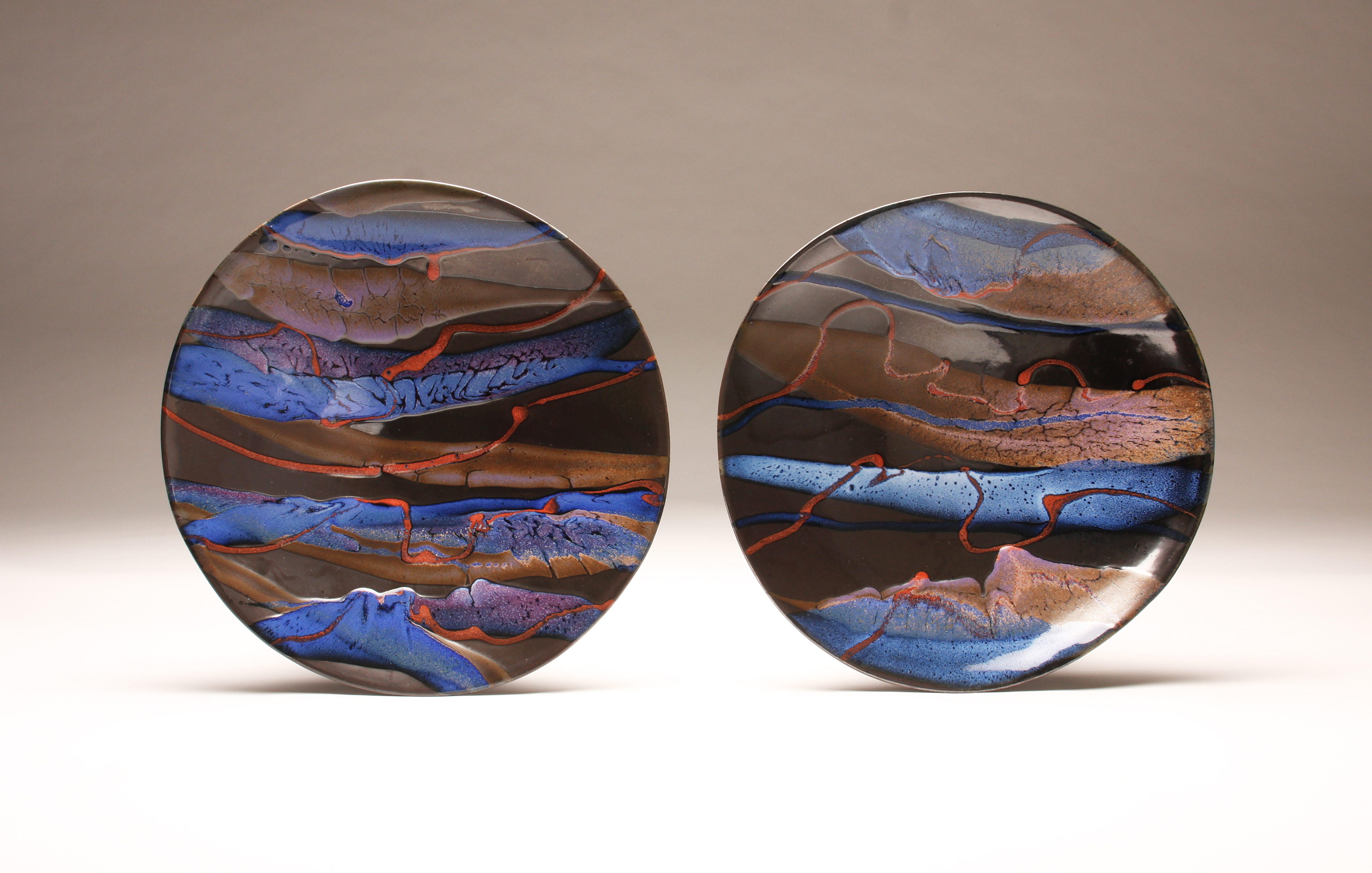 GH: Everything that Daphne does is consummate, it's complete, whether it's weaving or gardening or cooking. She's an intelligent woman, a researching woman, an inquisitive woman. And I'd say if there was a consideration in her work, it's thorough. She understands glazes more than I do, has a clear sense of design and what she wants. There is a refinement and a delicacy with the work that fits her personality, exactly. The refinement and the finish of the work, and the ambitiousness of the work is all packed into those pieces. I hope she continues to make pots for a long time.
GH: Everything that Daphne does is consummate, it's complete, whether it's weaving or gardening or cooking. She's an intelligent woman, a researching woman, an inquisitive woman. And I'd say if there was a consideration in her work, it's thorough. She understands glazes more than I do, has a clear sense of design and what she wants. There is a refinement and a delicacy with the work that fits her personality, exactly. The refinement and the finish of the work, and the ambitiousness of the work is all packed into those pieces. I hope she continues to make pots for a long time.
Concluding thoughts
DH: There is always the seeking, it's all about exploration. I have never tired of it. There's always something more to explore in the world of clay and glazes and atmospheric firings. We're dealing with essential materials of earth and fire and water and air, and we're playing. It's playing, but playing with a purpose, and seeking more information. I’m grateful for living this clay-centered life, and the community encompassed by it.
GH: I try to make each thing surrounded by my consciousness three-hundred-sixty degrees, inside outside, every detail considered, the best I can make it. Every coffee cup is special to me as an individual. I try to keep my work alive in that way. There’s almost a more spiritual approach to the work. I'm reading about a pianist who, when they approach the instrument, it's like a reverence for the instrument. It's not about who's going to hear it, it's not about whether or not you'll have a big audience or a small audience, it's about your reverence for the piano. I approach clay like that, with reverence.
